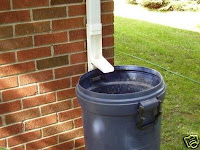How many paper towels does your family use in a day, in a
month, in a year? The hard truth is,
that there are tons {literally about 7300 tons according to the American Forest
and Paper Association} of paper towels used and then thrown into our landfills
each year!
There is a simple solution, and it takes little effort to
make the change! UNpaper towels are a
great alternative to paper towels because they are about the same size and
consistency. They make it easy for even
the steadfast paper towel user to go a little more green!
There are a lot of different options when it comes to
UNpaper towels, including the ones that we offer on our website: http://stores.homestead.com/ahappygreenlife/-strse-11/UNpaper-Towels/Detail.bok
These ones are 100% cotton birdseye with colorful serging all around. They are 2ply, which makes them more durable
and ‘thirsty’.
I am always asked “can you really use UNpaper towels for everything
that you normally use paper towels?” And
I have done the tests! I use our UNpaper
towels to clean mirrors and windows, and I think they do a better job than
paper towels because they don’t leave any paper lint and they are streak free
{even when just using water for a quick cleanup!}. We of course use them to wipe counters, as
napkins, to clean messy faces and for washing dishes. I keep a stash of them in the glove
compartment so that we have easy access to them on the go! They really are the easiest green product
with almost unlimited uses!
So, take the challenge!!
Count how many paper towels you use this week – as a matter of fact, instead
of throwing them into the garbage, throw them into their own bag and watch them
pile up!! We would LOVE to see pictures
when you take the challenge!! And then
make the switch to reusable, and cute UNpaper towels!!





